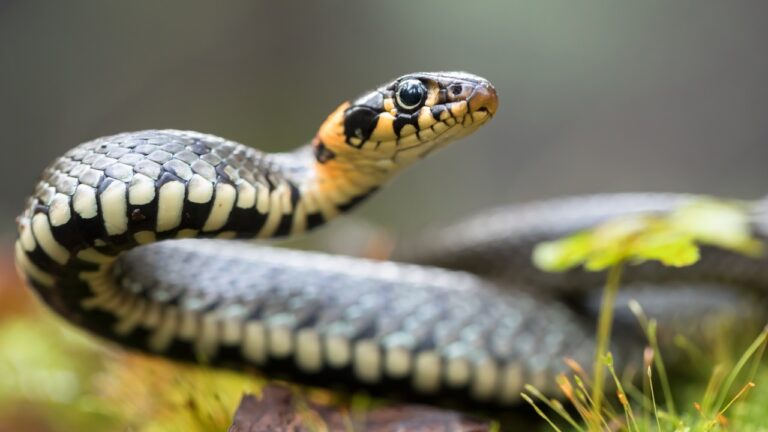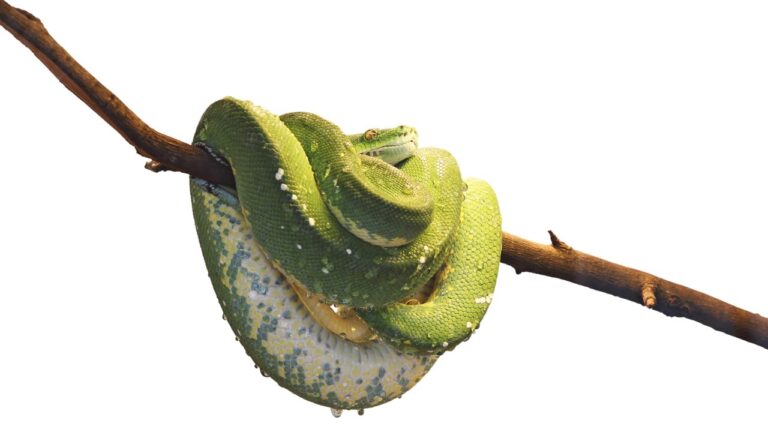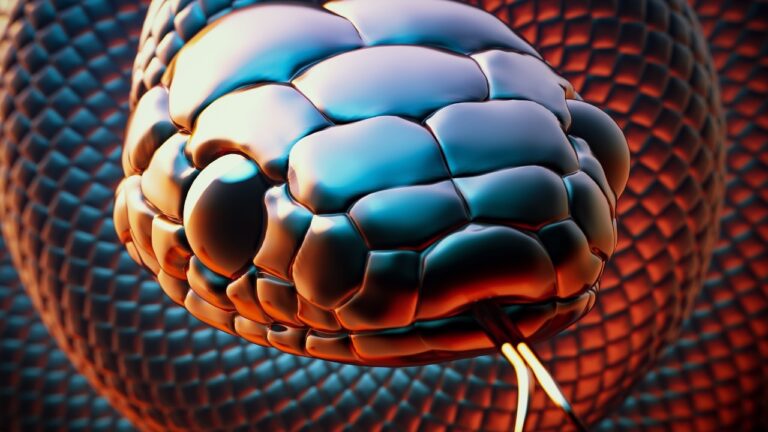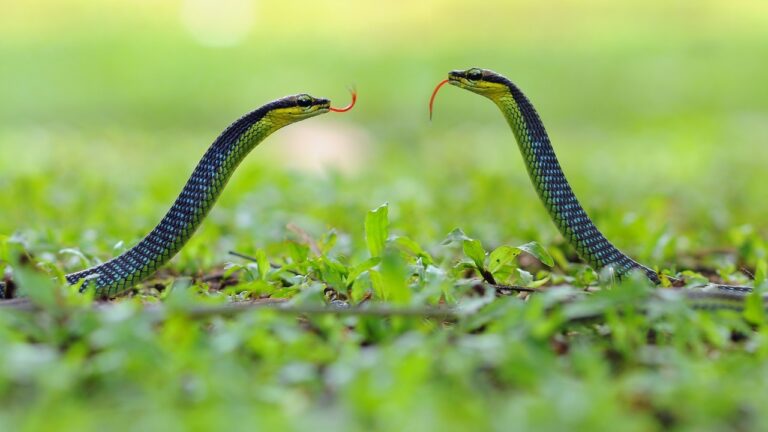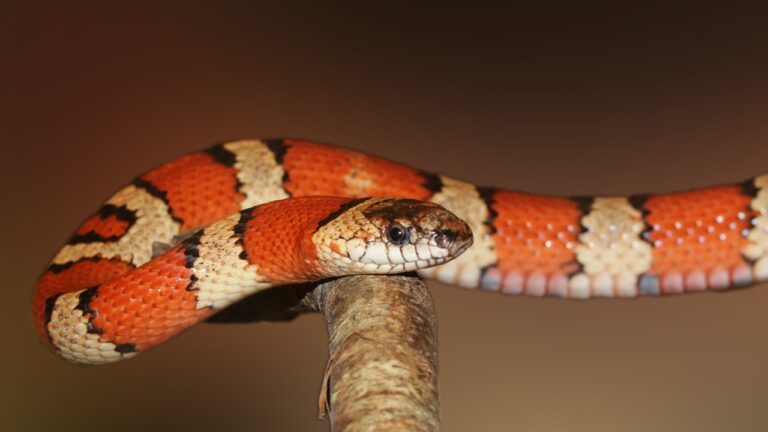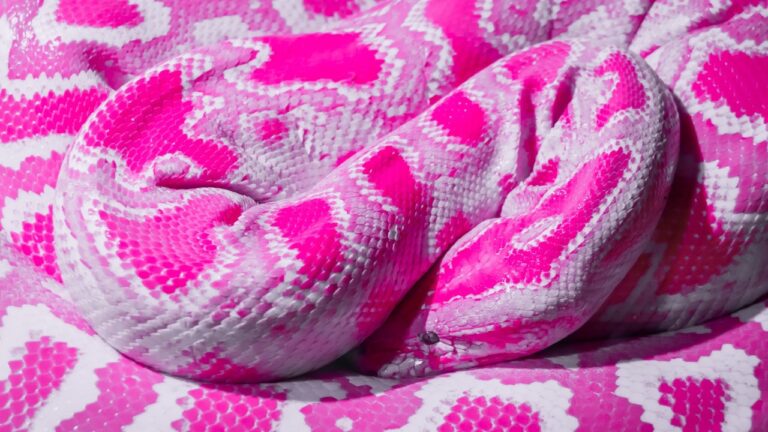Snake Food: Essential Nutrition for Healthy Reptiles
The Importance of Proper Nutrition for Snakes
When it comes to our slithering friends, snakes, it’s crucial to prioritize their nutrition to ensure their overall health and well-being. A snake’s diet plays a vital role in maintaining their physical condition, growth, and longevity. Just like any other animal, snakes require a balanced and nutrient-rich diet to thrive.
Snakes are fascinating creatures known for their carnivorous nature. Their diet primarily consists of various types of prey, which they encounter in the wild. However, feeding captive snakes can be a different ball game altogether, as it requires careful consideration of their specific nutritional needs.
In this article, we will explore the importance of proper nutrition for snakes and delve into the various aspects of their diet. We will discuss the natural diet of snakes, feeding considerations for captive snakes, different types of snake food, nutritional requirements, feeding schedules, and the significance of supplementing their diets. So, let’s slither into the world of snake nutrition and unlock the secrets to keeping these remarkable reptiles healthy and thriving.
But first, let’s understand why proper nutrition is of utmost importance for snakes. Just like any living being, snakes rely on the sustenance they consume to fuel their bodies and maintain optimal health. A well-balanced diet not only provides them with the energy they need for daily activities but also supports their growth, reproduction, and immune function.
When snakes are provided with inadequate or improper nutrition, it can lead to a range of health issues. Nutritional deficiencies can weaken their immune system, making them more susceptible to diseases and infections. Furthermore, poor nutrition can hinder their growth and development, resulting in stunted growth or skeletal abnormalities.
In addition to the physical implications, an unbalanced diet can also affect a snake’s behavior and temperament. Snakes that are not adequately nourished may become lethargic, irritable, or even exhibit aggressive tendencies.
To ensure the well-being of our scaly companions, it is essential to understand their natural dietary requirements and replicate those as closely as possible in captivity. By providing a diet that meets their nutritional needs, we can help snakes thrive in their artificial environments and promote their overall longevity.
In the upcoming sections, we will explore the natural diet of snakes, the feeding considerations for captive snakes, the types of snake food available, their nutritional requirements, proper feeding schedules, and the importance of supplementing their diets. So, grab your mouse and slither through the rest of this article to unlock the secrets of optimal snake nutrition. Your scaly friends will thank you for it!
To learn more about snake diets, you can check out our comprehensive guide on snake nutrition.
Natural Diet of Snakes
Carnivorous Nature of Snakes
Snakes, with their mesmerizing slither and unique physical attributes, are fascinating creatures that capture the imagination of many. One of the defining characteristics of these limbless reptiles is their carnivorous nature. Unlike other animals that have a more diverse diet, snakes primarily feed on other animals, making them true predators of the animal kingdom.
Types of Prey Snakes Eat in the Wild
In the wild, snakes have a varied menu, showcasing their adaptability and resourcefulness as hunters. The specific types of prey they consume depend on their species, size, and habitat. From small rodents and birds to amphibians and even other reptiles, snakes have evolved to target and capture a wide range of prey.
Some snakes, such as the mighty constrictors like pythons and boas, possess the strength and agility to overpower and constrict larger animals, like deer or antelope. These formidable predators demonstrate their prowess by employing their muscular bodies to encircle their prey, rendering them defenseless.
On the other hand, venomous snakes, like cobras and vipers, have developed a different strategy to secure their meals. Their venomous fangs inject potent toxins into their victims, immobilizing them and aiding in the digestion process. These venomous serpents typically target smaller creatures, such as rodents, lizards, and sometimes even insects.
As we delve deeper into the world of snake nutrition, it becomes evident that understanding their natural diet is crucial when it comes to providing them with the proper care in captivity. By replicating their natural feeding habits, snake owners can ensure the overall well-being and longevity of their scaly companions.
To learn more about snake nutrition and how to provide a well-balanced diet for your reptile friend, head over to our comprehensive article on snake diet. Stay tuned for our next segment, where we will explore the feeding considerations for captive snakes and the common mistakes to avoid.
Feeding Considerations for Captive Snakes
When it comes to keeping snakes as pets, one of the most crucial aspects of their care is ensuring they receive proper nutrition. As carnivorous creatures, snakes have specific dietary needs that must be met in order for them to thrive in captivity. Understanding these nutritional requirements and avoiding common feeding mistakes are essential for the health and well-being of your scaly companions.
Understanding the Nutritional Needs of Snakes
To provide the best care for your captive snake, it’s crucial to have a deep understanding of their nutritional needs. Snakes require a diet rich in protein and amino acids to support their growth, muscle development, and overall health. In the wild, snakes primarily feed on a variety of prey, such as rodents, birds, and even other reptiles, tailoring their diet to suit their specific species and size.
When it comes to feeding captive snakes, replicating their natural diet is key. Providing a diverse range of prey items that mimic the nutritional composition of their wild diet is vital for their well-being. This can include live prey, frozen and thawed prey, or even commercially available snake diets that have been specially formulated to meet their nutritional requirements.
Common Mistakes to Avoid
While it’s important to understand what snakes need in their diet, it’s equally crucial to be aware of common mistakes that snake owners often make when it comes to feeding. One common mistake is overfeeding, which can lead to obesity and related health issues. Snakes have slower metabolisms compared to other animals, and feeding them too frequently or offering prey that is too large can have detrimental effects on their health.
Another mistake to avoid is feeding inappropriate prey items. Snakes have different prey preferences based on their species and size. Offering prey that is too large or small can result in difficulties with digestion or an inadequate nutritional profile. It’s essential to research the specific dietary requirements of your snake species and provide appropriate prey items accordingly.
Lastly, some snake owners may neglect to provide the necessary supplements to ensure their pet’s nutritional needs are fully met. Snakes require certain vitamins and minerals, such as calcium and vitamin D3, to maintain proper bone health and metabolic functions. Failing to supplement their diet appropriately can lead to deficiencies and health problems down the line.
By understanding the nutritional needs of captive snakes and avoiding common feeding mistakes, you can ensure that your scaly friend receives the optimal diet for their overall health and well-being. Remember to tailor their diet to their species and size, provide a variety of prey options, and supplement their meals with necessary vitamins and minerals.
For more information on snake nutrition, check out our comprehensive snake feeding guide.
Types of Snake Food
When it comes to feeding our slithering friends, there are several options to consider. Live prey, frozen and thawed prey, and commercial snake diets all have their merits and drawbacks. Let’s take a closer look at each of these options to help you make an informed decision.
Live Prey
For many snake owners, providing live prey is a natural choice. After all, snakes in the wild hunt and consume live animals. By offering live prey, you are replicating their natural feeding behavior. Watching a snake strike and constrict its prey can be both mesmerizing and educational.
There are, however, some considerations to keep in mind when it comes to live prey. Safety is a primary concern. Live prey can potentially injure your snake during the feeding process. Additionally, live prey may carry parasites or diseases that can be transmitted to your snake. Regular veterinary check-ups and proper quarantine procedures for live prey can help mitigate these risks.
Frozen and Thawed Prey
An increasingly popular alternative to live prey is offering frozen and thawed prey. This method provides the benefits of a natural diet without the associated risks. Frozen prey is readily available from reputable suppliers, ensuring it is disease-free and safe for your snake. It also allows for convenient storage, as you can buy in bulk and thaw as needed.
To serve frozen and thawed prey, simply thaw the prey item in warm water and present it to your snake using feeding tongs. This method not only eliminates the risk of injury to your snake but also reduces the stress on the prey animal. By choosing frozen and thawed prey, you can provide a safe and nutritionally balanced meal for your snake.
Commercial Snake Diets
For those looking for convenience and a well-balanced diet, commercial snake diets can be an excellent option. These specially formulated diets are designed to meet the nutritional requirements of snakes, ensuring they receive all the essential nutrients they need to thrive.
Commercial snake diets come in various forms, such as pellets or frozen patties, and are typically made from a blend of high-quality proteins, fats, vitamins, and minerals. They are easy to store, convenient to feed, and eliminate the need for handling live or frozen prey.
While commercial snake diets offer convenience, it’s essential to research and choose a reputable brand that provides a well-rounded nutritional profile for your snake. Supplementing the diet with additional nutrients, such as calcium and vitamin D3, may be necessary to ensure optimal health.
In the next section, we will explore the specific nutritional requirements of snakes in more detail, so stay tuned to learn more about providing a balanced diet for your scaly companion.
Are you interested in learning more about snake nutrition? Check out our article on snake nutrition for a comprehensive guide to feeding your snake.
Nutritional Requirements for Snakes
When it comes to the nutritional needs of snakes, a well-balanced diet is of utmost importance. Snakes, being carnivorous creatures, require specific nutrients to thrive and maintain optimal health. Let’s explore the key elements that contribute to their nutritional requirements.
Protein and Amino Acids
Protein serves as the building block of life for snakes, as it does for many other animals. It plays a crucial role in the growth, development, and maintenance of their body tissues. Snakes obtain protein primarily from their prey, as it contains essential amino acids that cannot be synthesized by their own bodies. These amino acids are vital for various physiological functions, such as muscle development, enzyme production, and hormone regulation.
To ensure a well-rounded diet, it is important to provide snakes with a variety of prey species, as different prey items offer varying amounts and types of proteins. This diversity helps to fulfill their amino acid requirements and prevent any potential deficiencies.
Fats and Essential Fatty Acids
While fats may have a negative connotation in human diets, they play a crucial role in the nutrition of snakes. Fats serve as a concentrated source of energy for these reptiles, allowing them to sustain their metabolic activities. Additionally, fats provide insulation and aid in the absorption of fat-soluble vitamins.
Essential fatty acids, such as omega-3 and omega-6 fatty acids, are crucial for snakes as they cannot be synthesized by their bodies. These fatty acids contribute to various physiological processes, including cell membrane formation, hormone production, and immune function.
To maintain a healthy balance, it is important to provide snakes with prey items that offer a suitable amount of fats and essential fatty acids. This ensures their energy needs are met while supporting their overall well-being.
Vitamins and Minerals
Vitamins and minerals are essential micronutrients that snakes require in small amounts for various bodily functions. These nutrients contribute to processes such as metabolism, bone development, and immune system regulation.
Among the key vitamins for snakes are vitamin A, vitamin D, and vitamin E. Vitamin A is important for vision and reproductive health, while vitamin D aids in calcium absorption and bone health. Vitamin E acts as an antioxidant, protecting cells from damage.
Minerals such as calcium, phosphorus, and potassium are vital for maintaining healthy bones, muscle contractions, and fluid balance. Snakes obtain these micronutrients through their prey, and it is important to ensure that their diet provides an appropriate balance of vitamins and minerals.
Water
Water, although not a nutrient, is essential for the proper functioning of a snake’s body. Snakes obtain water primarily through their prey, but they also need a source of fresh water for hydration. Proper hydration is necessary for digestion, maintaining body temperature, and overall physiological functions.
Ensuring that snakes have access to clean water at all times is crucial for their well-being. Regularly offering fresh water in a shallow dish or misting their enclosure can help meet their hydration needs.
Understanding the nutritional requirements of snakes is fundamental to their overall health and well-being. By providing a balanced diet that includes adequate protein, fats, vitamins, minerals, and water, snake enthusiasts can help their scaly companions thrive. For further guidance on snake nutrition, consider checking out our comprehensive snake feeding guide, which covers all aspects of their dietary needs.
Feeding Schedule and Portions
Snakes, like any other animals, require a well-planned feeding schedule and appropriate portion sizes to maintain optimal health and nutrition. The frequency of feeding and the amount of food provided play crucial roles in ensuring the well-being of these fascinating reptiles.
Frequency of Feeding
When it comes to the frequency of feeding, it is important to consider the age, size, and species of your snake. Younger snakes, for instance, tend to have higher metabolic rates and require more frequent meals compared to their adult counterparts. Typically, juvenile snakes should be fed more frequently, often every 5-7 days, while adults can be fed every 7-14 days.
However, it is worth noting that there are some exceptions to this general guideline. Certain snake species have specific dietary requirements that may necessitate more frequent or less frequent feeding schedules. It is always advisable to do thorough research on your specific snake species to ensure you are providing the most appropriate feeding schedule.
Proper Portion Sizes
Determining the correct portion size for your snake can be a bit challenging, as it depends on the size, age, and species of the snake, as well as the type of prey being offered. As a general rule of thumb, the prey item should be about the same width as the widest part of your snake’s body. This ensures that the snake can consume the prey without any difficulties or risk of regurgitation.
It is important to avoid overfeeding your snake, as this can lead to obesity and other health problems. Over time, excessive weight gain can put unnecessary strain on their internal organs and potentially shorten their lifespan. Conversely, underfeeding can result in malnutrition and stunted growth.
To determine the appropriate portion size, it is helpful to monitor your snake’s body condition. A healthy snake should have a well-defined body shape, with a slight taper towards the tail. If your snake appears too thin or has prominent ribs, it may be an indication that you need to increase the portion size. On the other hand, if your snake is becoming overweight and losing its distinct body shape, it may be necessary to reduce the portion size.
Remember, finding the right balance is essential for your snake’s overall well-being. Regularly assessing their body condition and adjusting the portion size accordingly will help ensure they receive the proper nutrition without any unnecessary health risks.
In conclusion, establishing a suitable feeding schedule and providing proper portion sizes are vital components of responsible snake care. By adhering to a well-planned feeding routine and monitoring your snake’s body condition, you can help promote their overall health and longevity. For more detailed information on snake nutrition and feeding guidelines, check out our comprehensive snake feeding guide.
Supplementing Snake Diets
As responsible reptile owners, it is important to ensure that our snakes receive a well-rounded and balanced diet. While snakes primarily get their nutrition from their prey, there are certain supplements that can be beneficial to their overall health. In this section, we will explore the importance of calcium and vitamin D3, as well as other nutritional supplements that can enhance the well-being of our scaly friends.
Calcium and Vitamin D3
Calcium plays a crucial role in the development and maintenance of a snake’s skeletal system. It is essential for healthy bone growth and muscle function. In the wild, snakes would obtain calcium from the bones of their prey. However, captive snakes may not have access to bone-rich meals, making supplementation necessary.
Vitamin D3, on the other hand, aids in the absorption of calcium in the snake’s body. It helps regulate calcium levels and ensures that the snake can utilize this vital mineral effectively. In the wild, snakes would obtain vitamin D3 through exposure to sunlight. However, for captive snakes that may not have access to natural sunlight, it is important to provide them with a proper source of vitamin D3.
To supplement their diets with calcium and vitamin D3, you can either dust the prey with a calcium and vitamin D3 powder or provide a dedicated supplement. By doing so, you can help prevent conditions such as metabolic bone disease, which can occur when snakes do not receive adequate levels of calcium and vitamin D3.
Other Nutritional Supplements
In addition to calcium and vitamin D3, there are other nutritional supplements that can benefit your snake’s overall health. These supplements may include multivitamins, which provide a wide range of essential vitamins and minerals, and omega-3 fatty acids, which are beneficial for skin and immune health.
When considering nutritional supplements for your snake, it is important to consult with a reptile veterinarian or an experienced herpetologist. They can guide you on the specific needs of your snake based on its species, age, and overall health. Remember, each snake is unique, and their nutritional requirements may vary.
By supplementing your snake’s diet with the appropriate nutrients, you can help ensure that they receive a complete and balanced diet. However, it is important to note that supplements should never replace the primary source of nutrition, which is the prey itself.
In the next section, we will discuss the importance of establishing a feeding schedule and understanding the proper portion sizes for your snake’s diet. Stay tuned to learn more about how to provide the best nutrition for your scaly companion!
Internal links: snake feeding schedule, snake nutrition.
Conclusion
In conclusion, providing proper nutrition for your snakes is essential for their overall health and well-being. Understanding the natural diet of snakes and their specific nutritional requirements is crucial for maintaining their optimal health in captivity.
Snakes are inherently carnivorous creatures, and their diet in the wild consists primarily of small mammals, birds, reptiles, and amphibians. When kept in captivity, it is important to replicate their natural diet as closely as possible to ensure they receive the necessary nutrients.
Feeding considerations for captive snakes require a deep understanding of their nutritional needs. Avoiding common mistakes, such as feeding inappropriate prey or overfeeding, is vital to prevent health issues. Ensuring a balanced diet for your snake is crucial to support its growth, development, and overall vitality.
There are different types of snake food available, including live prey, frozen and thawed prey, as well as commercial snake diets. Each option has its advantages and disadvantages, but it is important to choose the most suitable one for your snake’s specific needs.
When it comes to nutritional requirements, snakes require a diet rich in protein and amino acids to support their growth and muscle development. They also need fats and essential fatty acids for energy and to maintain healthy skin and organ function. Additionally, vitamins and minerals play a crucial role in their overall health, including bone strength, immune system function, and reproductive health. Adequate water intake is also essential for proper digestion and hydration.
Establishing a feeding schedule and portion sizes is essential for maintaining a healthy weight and preventing obesity or malnutrition in snakes. The frequency of feeding depends on the age, species, and size of the snake, and it is important to follow a snake feeding schedule that suits their specific needs. Providing appropriate portion sizes ensures that your snake receives the right amount of nutrients without overeating.
Supplementing snake diets may be necessary to meet specific nutritional requirements. Calcium and vitamin D3 supplementation is crucial for proper bone development and prevention of metabolic bone disease. Other nutritional supplements, such as multivitamins or probiotics, may also be beneficial in certain cases.
In conclusion, maintaining a well-balanced and nutritious diet is crucial for the health and longevity of your pet snakes. By understanding their natural diet, nutritional requirements, and feeding considerations, you can provide them with the best care possible. Always consult a veterinarian or a qualified reptile specialist for expert advice on snake nutrition and snake feeding to ensure the well-being of your scaly companions.


